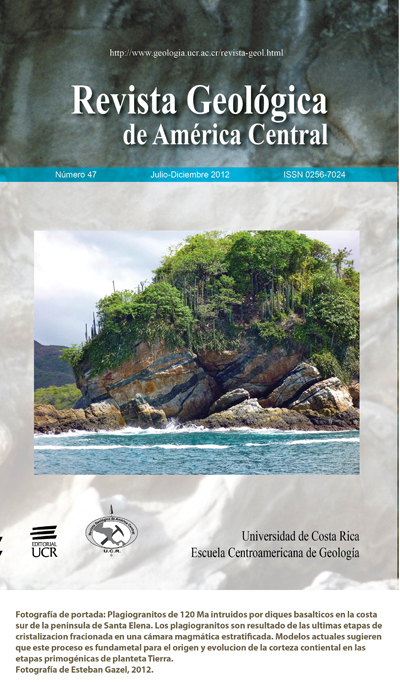Abstract
In the area of Napoles, South of San Marcos, Tarrazú, located within a broad structural belt not yet fullydefined at the boundary between and Térraba and Valle Central sedimentary basins, the sample LOR-10 provided anfaunal assemblage of exclusively agglutinated benthic foraminifera. As there were not found planktonic foraminifera,biostratigraphic determinations were not possible to obtain. Of the identified individuals, these correspond to 3 su-borders, 9 superfamilies and 33 species. Regarding to the Shannon diversity index (H), the result for paleoecologicalinterpretations was of H = 1.4, indicating conditions of marshes and marginal marine environments. On the other hand,the benthic foraminifera identified in the sample to species level, have very wide ranges of existence: from Triassic toRecent.From the point of view regarding to paleoecological salinity, there were determined the following percentages: rotaliids53.3%, texturaliids 41.9% and miliolids 2.2%, values that are indicative of brackish lagoon environments, estuarine andshelf, these mix of environments is indicative of an allochthonous reworked deposit.The presence of Portatrochammina sp. (4.3%) that appears between 500 and 2000 m, but is abundant approximatelybetween 600 and 700 m and of Cibicides lobatulus (3.2%) indicative of the upper middle bathyal zone (500-1500m), confirm the interpretation of the deposit environment as a submarine fan of middle bathyal waters. Likewise,the preeminence of agglutinated foraminifera suggests an important contribution of detritus into the basin. Finally,stratified, cold, deep, basins with high sedimentation rates favor the preservation of agglutinated foraminifera insteadcarbonate ones.






